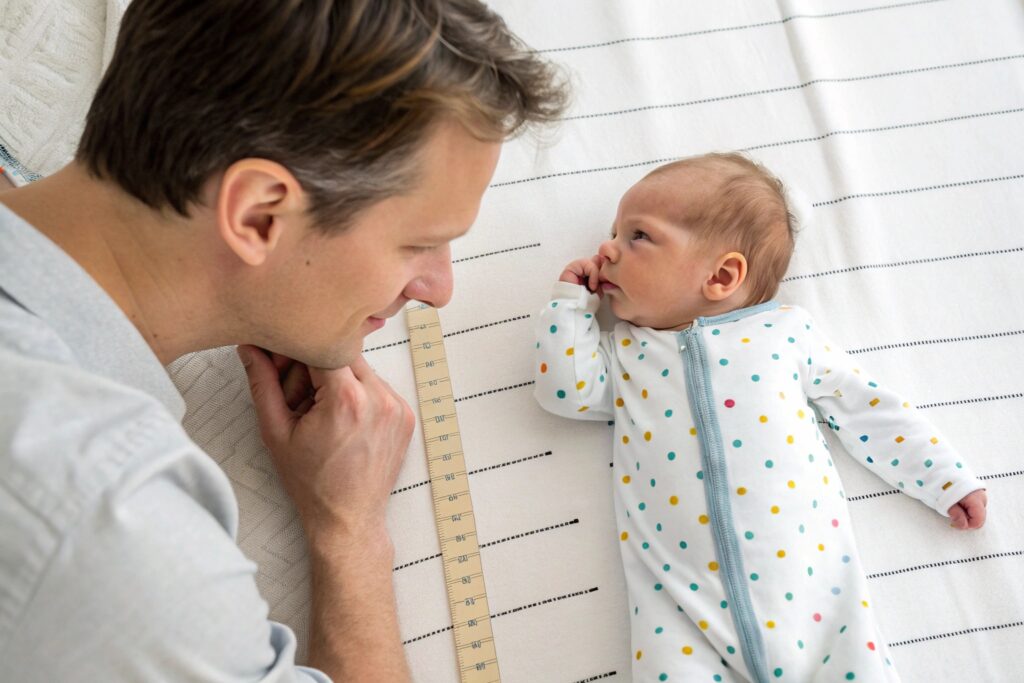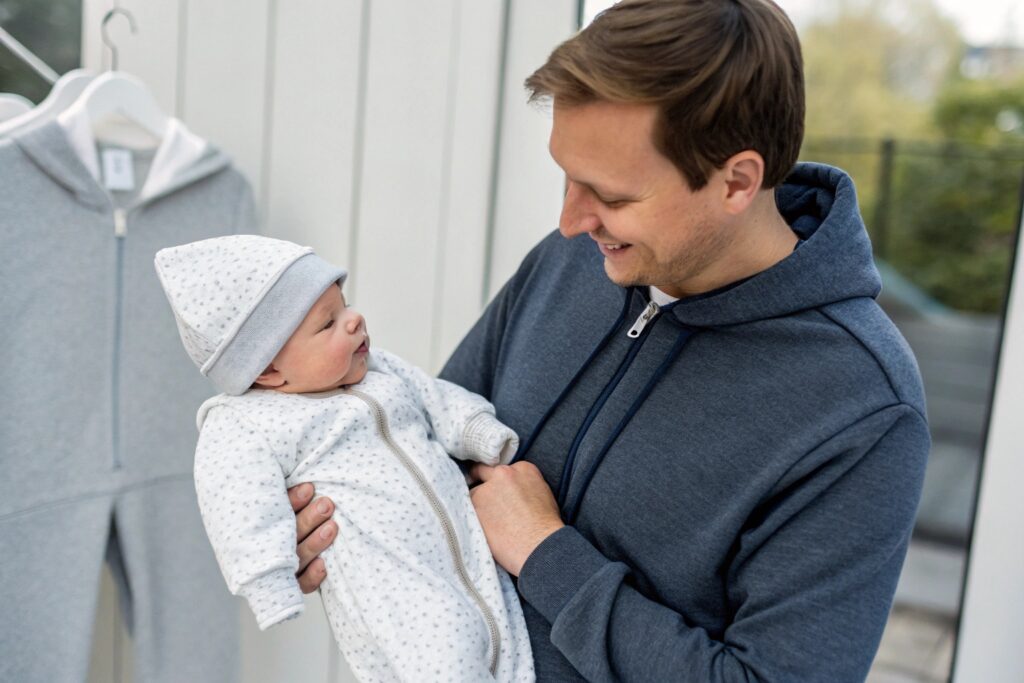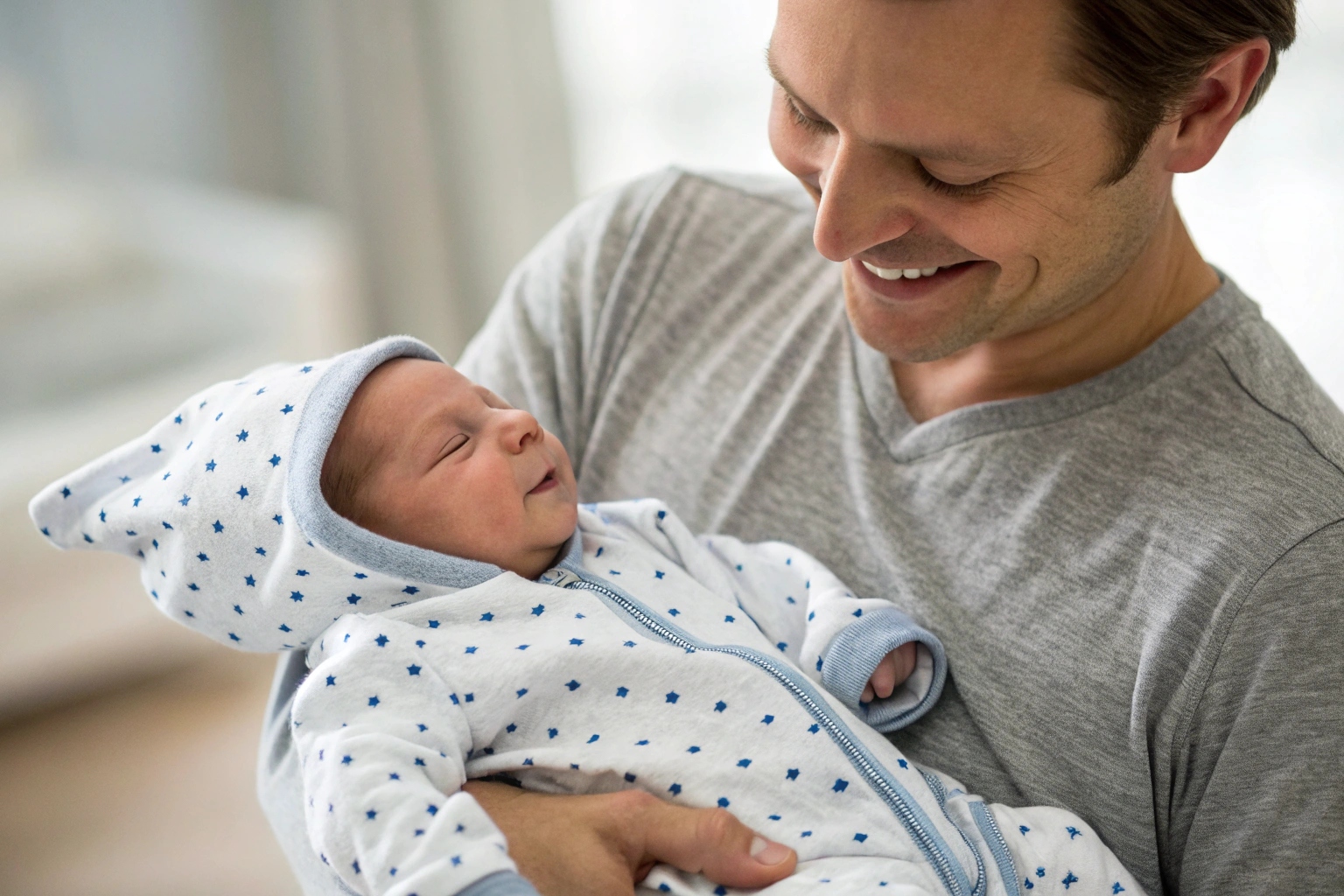Parents get frustrated when baby clothes don’t fit—even when they follow the size chart. This sizing problem isn’t just annoying. It costs businesses money and trust.
Made-to-order babywear solves the fit problem by offering custom sizing that adapts to each baby's real body measurements, improving comfort, reducing returns, and increasing customer satisfaction.
As a babywear manufacturer, I’ve seen firsthand how poor sizing leads to waste and unhappy clients. But I've also seen how made-to-order changes that. Let's look deeper.
Why Standard Baby Sizes Often Don’t Fit Well?
Many parents feel let down when brand-new baby clothes fit too tight or too loose. It’s not their fault—they followed the size guide. The truth is, standard sizing doesn’t reflect real babies.
Standard baby sizes are based on general averages, not actual measurements. Babies grow quickly and differently, so standard sizing often leads to poor fit and discomfort.

How are standard baby sizes calculated, and why are they so often off for real babies?
Most baby clothing companies use average measurements collected years ago. These come from data on weight and length from national health surveys. But babies grow differently now, and each region has unique growth patterns. A three-month-old in Texas might weigh more than one in Stockholm. Yet, brands sell them the same 3M onesie. This results in loose necks, tight sleeves, or legs too short.
Here’s what makes sizing unreliable:
| Factor | How it Affects Fit |
|---|---|
| Growth speed | Babies grow in spurts, not evenly |
| Regional genetics | Babies' builds vary by region |
| Brand measurement baselines | Each brand defines "3M" differently |
| Shrinkage from washing | Post-wash size varies by fabric |
Another issue is layered clothing. Some babies wear bodysuits under onesies. Some don’t. Standard sizing doesn’t consider that. As a result, parents end up stretching necklines or rolling up sleeves.
What’s the impact of inconsistent sizing on brands and babywear sellers?
When clothes don’t fit, parents return them. That’s costly for businesses. It means shipping fees, repackaging, and sometimes unsellable returns. Worse, it damages trust. A new parent who buys from you once but has a bad fit experience might never come back.
For wholesale buyers like Ron, poor sizing causes serious stock management problems. Sizes don’t sell evenly. Warehouses get stuck with “unpopular” sizes, which are really just “bad fits.” That’s why many of my clients now ask for sizing options, or even flexible sizing charts designed by region.
How Custom Sizing Improves Babywear Comfort?
When babies can’t move freely, they cry. They scratch at itchy seams, pull at tight collars, or get fussy. The root of the problem is usually poor fit.
Custom sizing matches clothing dimensions with actual baby measurements, improving comfort, reducing skin irritation, and allowing full mobility.

What specific comfort issues do babies face due to poor-fitting clothes?
Babies have short necks, round bellies, and chubby limbs. Standard sizing can cause problems like tight cuffs or drooping shoulder seams. This is more than aesthetic—tight areas leave red marks. Loose necks expose skin to cold air. Poor fit leads to fussiness and less sleep, which frustrates both babies and parents.
Custom sizing helps eliminate:
- Scratchy contact from seams in the wrong place
- Restriction in armholes or legs
- Pressure on the belly after feeding
- Cold drafts through loose necks or waistlines
When I offer custom sizing for baby clients, I make sure the fit allows natural posture. Babies like to curl up, kick, and roll. Their clothes should move with them, not against them.
Why does comfort lead to stronger brand loyalty for baby clothing lines?
When clothes fit well, parents notice. They trust the brand more. That leads to repeat orders, especially for growing babies. I’ve seen brand owners increase customer retention just by improving fit. One client in Germany told me their repeat purchase rate doubled after switching to custom cuts.
Better comfort also means fewer bad reviews. On social media, frustrated parents often post about bad fits. Avoiding that kind of press is key to keeping a brand’s reputation strong in competitive markets.
Challenges and Benefits of Made-to-Order Production?
Custom sizing sounds great, but many companies fear it’s too expensive or too complex. That’s understandable. But technology has changed the game.
Made-to-order babywear brings higher accuracy, better quality, and less waste. With good planning, even small brands can manage custom production smoothly.

What are the real production challenges of made-to-order for babywear?
Made-to-order used to mean slow lead times and high minimums. But not anymore. Digital tech has changed that. Here's what buyers worry about:
| Challenge | Is it still a problem today? |
|---|---|
| Slower production cycles | No. Modern workflows are faster. |
| Higher fabric costs | Slightly, but balanced by less waste |
| Harder logistics | Yes, but DDP models solve this |
| Factory resistance to small runs | Yes, unless factory supports custom |
I’ve adapted my factory to handle small-batch orders efficiently. With fabric pre-cutting software and modular sewing teams, we can switch patterns quickly. This makes custom runs easier and faster than before.
Another common fear: pricing. While custom sizing costs more per piece, it reduces waste and returns. That’s important when you’re shipping overseas and managing warehouse costs. I’ve had buyers tell me that made-to-order saved them money over time by avoiding dead stock.
How can wholesalers and brand owners gradually transition to made-to-order?
You don’t have to switch all at once. Many of my clients begin with hybrid models. For example:
- Keep standard sizing for fast-moving styles
- Offer made-to-order for niche or premium items
- Test custom sizing in one country before expanding
Here’s a simple model I share with clients:
| Product Type | Sizing Strategy |
|---|---|
| Everyday basics | Standard sizing |
| Gift sets | Custom sizing optional |
| Seasonal items | Made-to-order preferred |
| Limited editions | Custom or regional fit |
By starting small, you learn what your customers want. And once they experience the better fit, they’ll ask for more.
Can On-Demand Manufacturing Reduce Return Rates?
Returns kill profits. Shipping costs, restocking time, and damaged goods all add up. Worse, high return rates ruin buyer confidence.
On-demand manufacturing reduces returns by improving size accuracy and delivering better quality garments tailored to individual needs.

What are the main reasons baby clothes get returned—and how does on-demand solve them?
Babywear returns happen for three big reasons:
- Wrong size or poor fit
- Fabric feels uncomfortable
- Item not as described
On-demand solves all three.
- Fit: Custom sizing ensures clothes fit real babies, not statistical averages.
- Comfort: You can select the fabric for each order. No scratchy seams.
- Expectations: With smaller runs, QC is tighter. Fewer defects slip through.
One of my clients in California used to get 20% returns on newborn outfits. After switching to on-demand, it dropped to 6%. That’s a big win.
How can I, as a buyer, use on-demand to strengthen my babywear business?
Start by tracking your return reasons. If size is the top issue, custom sizing will help. Then, work with a factory like ours that offers flexibility in MOQ and logistics.
We ship DDP, so your logistics headache is gone. You don’t need to overstock—just order what you need, when you need it.
Here’s what a simplified on-demand workflow looks like:
- You collect size info from end customers (optional, for custom fit)
- You send weekly or bi-weekly PO based on sales data
- We manufacture and ship within 10–14 days
- You avoid bulk stockpiling and guesswork
The return rate drops. Customer trust grows. You make better margins.
Conclusion
Made-to-order babywear isn’t just a trend—it’s a practical way to improve fit, comfort, and customer trust. It helps brands cut waste, save costs, and grow faster in a competitive market.










